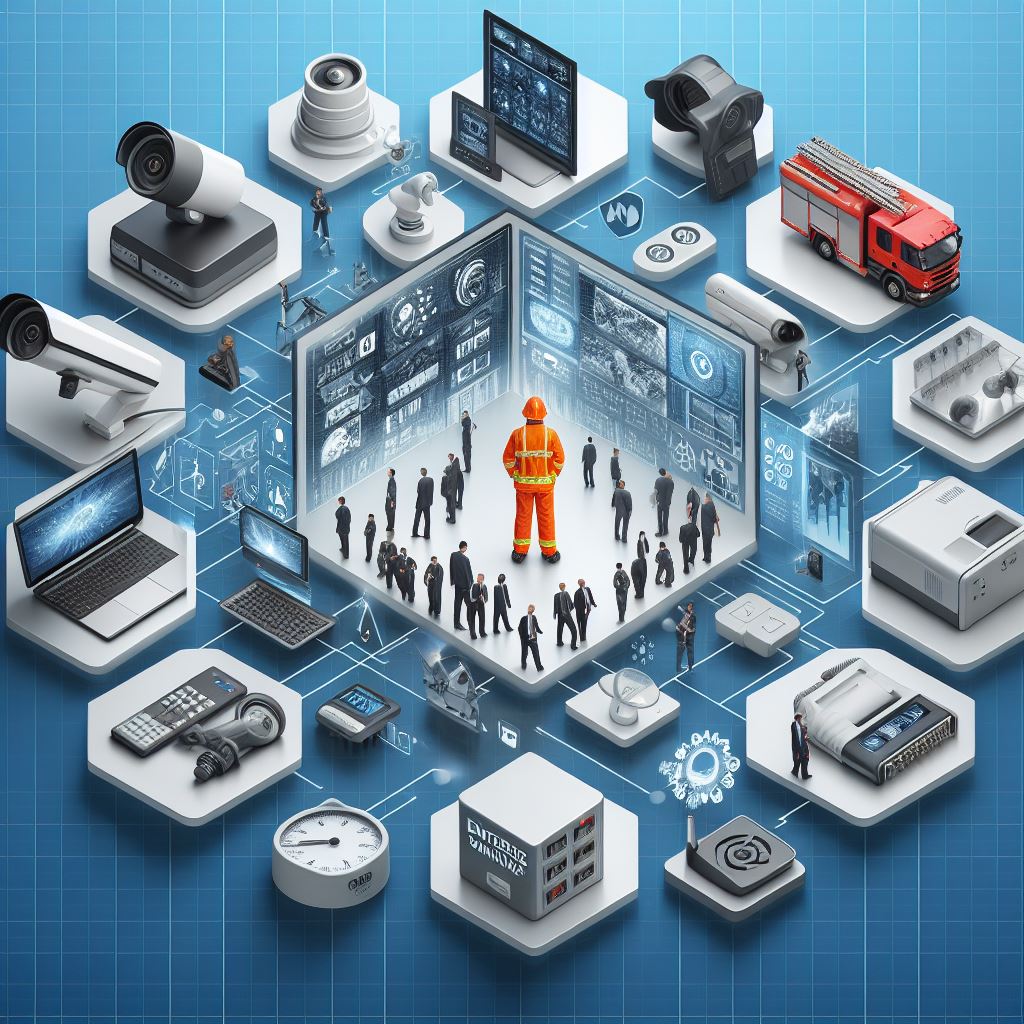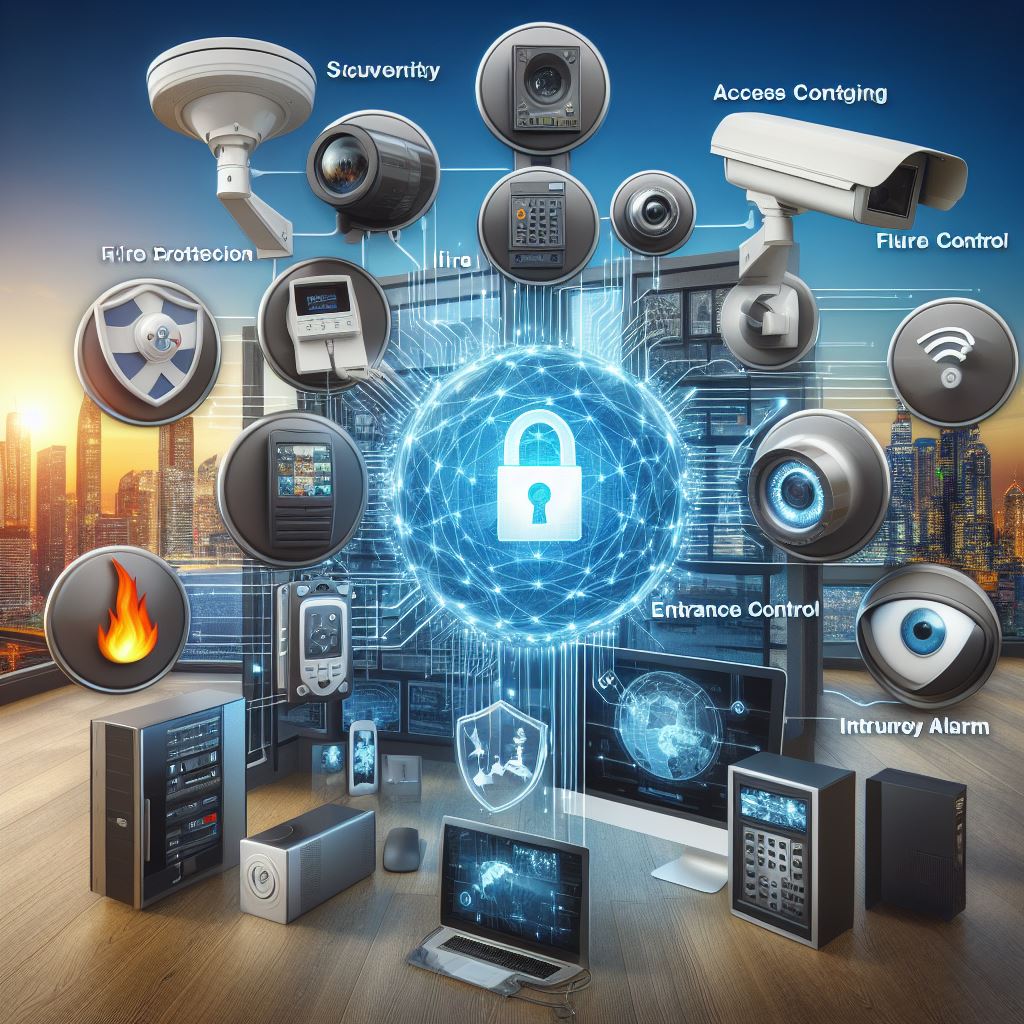The U.S. security solutions market is witnessing rapid evolution as technological advancements, rising security threats, and increasing demand for smarter, more efficient solutions continue to shape the landscape. From video surveillance to access control and intruder alarms, the market is undergoing a transformation driven by innovations in AI, cloud computing, and IoT. The convergence of physical and cyber security, along with new regulations and increased consumer awareness, is prompting businesses across industries to adopt state-of-the-art security systems and services.

Key Segments Driving Market Growth
The U.S. security solutions market can be broadly divided into two main categories: Security Systems and Security Services. Each segment plays a pivotal role in enhancing safety and ensuring that businesses, government agencies, and individuals are protected from a growing range of threats.
Security Systems
Video Surveillance Systems (VSS) Video surveillance remains one of the most critical elements in the U.S. security solutions market. With the rise of cloud storage, AI, and advanced analytics, traditional CCTV systems are being replaced with more sophisticated and intelligent solutions. AI-powered video surveillance enables real-time facial recognition, behavioral analysis, and anomaly detection, which can help identify security breaches as they occur. The integration of Video Surveillance as a Service (VSaaS) is also gaining momentum, offering businesses scalable, cost-effective surveillance options.
Access Control Systems (ACS) As security threats evolve, access control systems are moving beyond traditional key cards and locks to advanced solutions. Biometric authentication (e.g., fingerprint, facial recognition, and iris scanning) is rapidly replacing outdated access methods. Cloud-based access control (Access Control as a Service – ACaaS) allows companies to remotely monitor and control access to their facilities with ease, providing real-time updates and the flexibility to add or revoke access for employees.
Thermal Imaging Thermal cameras are increasingly being used for both security and operational efficiency, especially in critical infrastructure sectors. These systems detect heat signatures, enabling security teams to monitor areas in low-light conditions, detect intruders, and identify potential hazards like fire. Thermal imaging is also essential in preventing unauthorized access to secure areas, especially in sensitive environments such as government facilities and data centers.
Intruder Alarm Systems As part of an integrated security approach, intruder alarm systems continue to be a cornerstone of physical security. These systems, now enhanced with AI-driven analytics and IoT integration, offer real-time alerts, remote monitoring, and automated responses to intrusions. Modern intruder alarms are capable of differentiating between actual security breaches and false alarms, minimizing disruptions and enhancing security team response times.
Download PDF Brochure @ https://www.marketsandmarkets.com/pdfdownloadNew.asp?id=646
Fire Protection Systems Fire protection systems, including smoke detectors, sprinkler systems, and fire alarms, are essential for maintaining the safety of commercial buildings. Innovations in fire protection are focused on increasing response times, integrating smart technologies that can detect fires faster, and automatically alert emergency responders, even before human intervention. The integration of fire safety with other security systems, such as video surveillance and access control, is also gaining traction in commercial buildings.
Entrance Control Systems Turnstiles, revolving doors, and security gates are being integrated with sophisticated technologies like facial recognition and biometric scanners to improve the efficiency and security of entry and exit points. Smart entry solutions allow for seamless yet secure access control in high-traffic areas, reducing the risks associated with unauthorized entry and tailgating.
Security Services
Security Systems Integration As companies deploy multiple security systems (e.g., video surveillance, access control, alarms, and fire protection), there is a growing need for security systems integration. This service ensures that all security devices work cohesively together, offering seamless operation across platforms. Integration services enable real-time monitoring, automated responses, and centralized control, streamlining security management for businesses.
Remote Monitoring The demand for remote monitoring services is on the rise, especially as more companies and individuals prefer to have round-the-clock surveillance without needing to employ full-time security personnel. Remote monitoring is enabled by cloud-based solutions, which offer businesses flexibility, cost-effectiveness, and easy scalability. Security monitoring centers are leveraging AI-driven platforms to provide proactive responses to security events and ensure the swift dispatch of emergency responders if needed.
Video Surveillance as a Service (VSaaS) Video surveillance as a service (VSaaS) is one of the fastest-growing services in the security industry. Instead of investing in costly on-premise infrastructure, businesses are increasingly turning to cloud-based video surveillance systems that allow them to store, manage, and access video feeds remotely. This not only reduces upfront costs but also provides businesses with greater scalability, as they can add new cameras and features without the need for additional on-site equipment.
Access Control as a Service (ACaaS) ACaaS is another rapidly growing trend in the security services market, offering businesses a flexible and cost-effective way to manage access to their facilities. With ACaaS, companies can move away from traditional, hardware-based access control systems and instead use cloud platforms for real-time access management. ACaaS solutions allow businesses to scale their security needs with ease, manage remote access, and reduce the cost of maintaining on-premise systems.

Innovations Reshaping the U.S. Security Solutions Market
The security solutions market is constantly evolving, driven by technological innovations that enhance the effectiveness, convenience, and scalability of security systems. Several trends are currently shaping the future of the industry:
AI and Machine Learning Integration AI and machine learning are transforming the way security systems work. From intelligent video surveillance systems that can recognize faces and identify suspicious activity to predictive analytics that can foresee potential security risks, AI is making security smarter and more efficient. By leveraging large amounts of data, machine learning algorithms are improving threat detection and response capabilities.
Cloud-Based Security Solutions Cloud technology is making security solutions more accessible, scalable, and flexible. With cloud-based security, businesses can easily store, access, and manage their data from anywhere in the world, reducing the need for on-site infrastructure. This also provides businesses with the ability to integrate different systems—such as video surveillance and access control—into a unified platform.
Integration of IoT Devices The Internet of Things (IoT) is playing an increasingly important role in modern security systems. From connected surveillance cameras and alarm systems to smart sensors and locks, IoT-enabled devices provide enhanced functionality and real-time monitoring. IoT solutions allow for better situational awareness, faster response times, and more efficient resource management.
Mobile Security Solutions Mobile apps and platforms are enabling security management on-the-go, allowing businesses and homeowners to monitor their properties and make adjustments to security settings from their smartphones. This has made security more accessible and manageable for users, empowering them with greater control over their surveillance systems.
The Future of U.S. Security Solutions Market
The future of the U.S. security solutions market looks promising, with continued growth driven by technological advancements, increasing security concerns, and the evolving threat landscape. As AI, IoT, and cloud technologies continue to gain traction, businesses and individuals can expect more integrated, efficient, and intelligent security solutions. The demand for remote monitoring, biometric authentication, and seamless system integration is expected to rise, creating new opportunities for innovation and market expansion.
In conclusion, the U.S. security solutions market is undergoing a transformation, with the convergence of advanced technologies like AI, IoT, and cloud computing reshaping how security systems are deployed and managed. From video surveillance to access control, the integration of smart, scalable, and cost-effective solutions is ensuring that businesses and individuals can respond effectively to emerging threats, enhancing both safety and operational efficiency.
